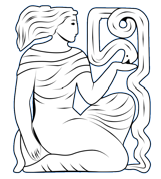Janet Hargreaves
This short but engaging biography explores the life of Lillian Urmston, a working-class nurse from Stalybridge near Manchester, who was in her early twenties when she volunteered with the Spanish Medical Aid Committee in the Spanish Civil War.
The structure of this biography was born out of the various artefacts left by Lillian, including a scrapbook and articles written for the nursing press, as well as a detailed research interview conducted around 1980, ten years before her death, as part of the Manchester Studies Interviews at Tameside Local Studies Centre. The authors have quoted extensively from this very valuable source, stating that it documents ‘the day-to-day work of a frontline nurse in wartime’ (p. 11). A limitation of this approach may be a fragmentary account, which is reflected in the book’s structure.
The book follows a broadly chronological pattern. It starts by charting Lillian’s early life in Stalybridge and her nurse training. She was grounded in her working-class roots, and had a strong sense of social justice, but was not politically active. Despite being an academically strong pupil, she was financially unable to stay in school, but was curious about the world and well read. Early in her nursing career she could see that humanitarian nursing in conflict or war was going to be needed and set out to be well qualified, including in midwifery, and then in tropical medicine in her post-registration training. She also volunteered with the Territorial Army, although she had no particular wish to be a military nurse.
When the Spanish Civil War broke out in 1936, she immediately applied to the Spanish Medical Aid Committee (SMAC), who initially ignored her. Undaunted, she continually contacted them until they granted her an interview. They were somewhat nonplussed by this young nurse. She was an unusual volunteer, since she was not drawn to the Communist Party and had no general political affiliation, she just passionately wanted to nurse in a war zone. SMAC remained reluctant to take her and it was not until June 1937 that she was accepted.
With one brief break back in Britain, which she spent touring to raise money for the republican war effort, Lillian remained a front-line nurse throughout the rest of the Civil War and when the Republic was finally defeated in January 1939, she joined the tens of thousands of people crossing the border to France as refugees. Lillian continued to offer nursing aid in the refugee camp, until some weeks later when she was found by the SMAC and repatriated.
Lillian returned to England and went on to lecture and write about casualty nursing in war and became an advisor on preparations for nursing prior to the Second World War. She then served with the British Expeditionary Force in Europe and the Middle East before a shell injury ended her active involvement in 1945.
In addition to this chronological line, the chapters highlight two aspects that are particular features of her experience. Firstly, her first-hand testimony regarding the significant medical and nursing advances that emerged from this conflict, shed light on innovations in triage, mobile medical centres based close to battle lines, and blood transfusion. Secondly the book examines her uneasy relationship with the Communist Party. At the start of the conflict other European powers agreed a non-interventionalist policy in relation to Spain which was ignored by Italy and Germany who provided significant arms and manpower. This led to the Republicans being hopelessly outnumbered. The Soviet Union responded by providing some arms, and much of the international voluntary response for the Republican campaign came either directly from Communists throughout the world, or from pacifists, socialists and anti-fascists. Lillian’s determinedly apolitical humanitarian response and her refusal to be drawn into communism were looked upon with suspicion, causing her to feel she was always an outsider.
Across all of these experiences, her detailed descriptions of events bring the text alive and show Lillian’s lively and courageous personality. For example, the hazardous journey across France and Southern Spain to get to the Aragon front, nursing in dreadful conditions, and specific innovative working practices, are detailed in vivid extracts from her prose.
The Spanish Civil War has attracted a huge amount of research, including its political and military significance for the Second World War. This book contributes to our understanding of the significant role Spain paid in the development of nursing and medicine in War.
The book benefits from the authors’ extensive knowledge of the period and ability to explain the complex interplay of countries and events clearly and succinctly, in particular in relation to the many nurses who served. Thus, Lillian’s experience can be located within the often very chaotic events of the war. Anyone unfamiliar with this history may still find themselves overwhelmed by its complexity; hopefully this book will motivate further reading.
In addition, both authors are Spanish speakers, and are located in Spain. They have also gained access to the communist archives in Moscow (a significant achievement for western researchers), giving the book a range of novel sources. This adds depth not available to earlier researchers, or to authors restricted to English archival resources.
A small number of typographic errors, most confusingly the assertion in several places that Lillian was nineteen when she volunteered, are confusing, since she was born in 1915 and volunteered in 1937. However, the book remains a significant addition to the historiography of nursing involvement in the Spanish Civil War, and is well worth reading.
